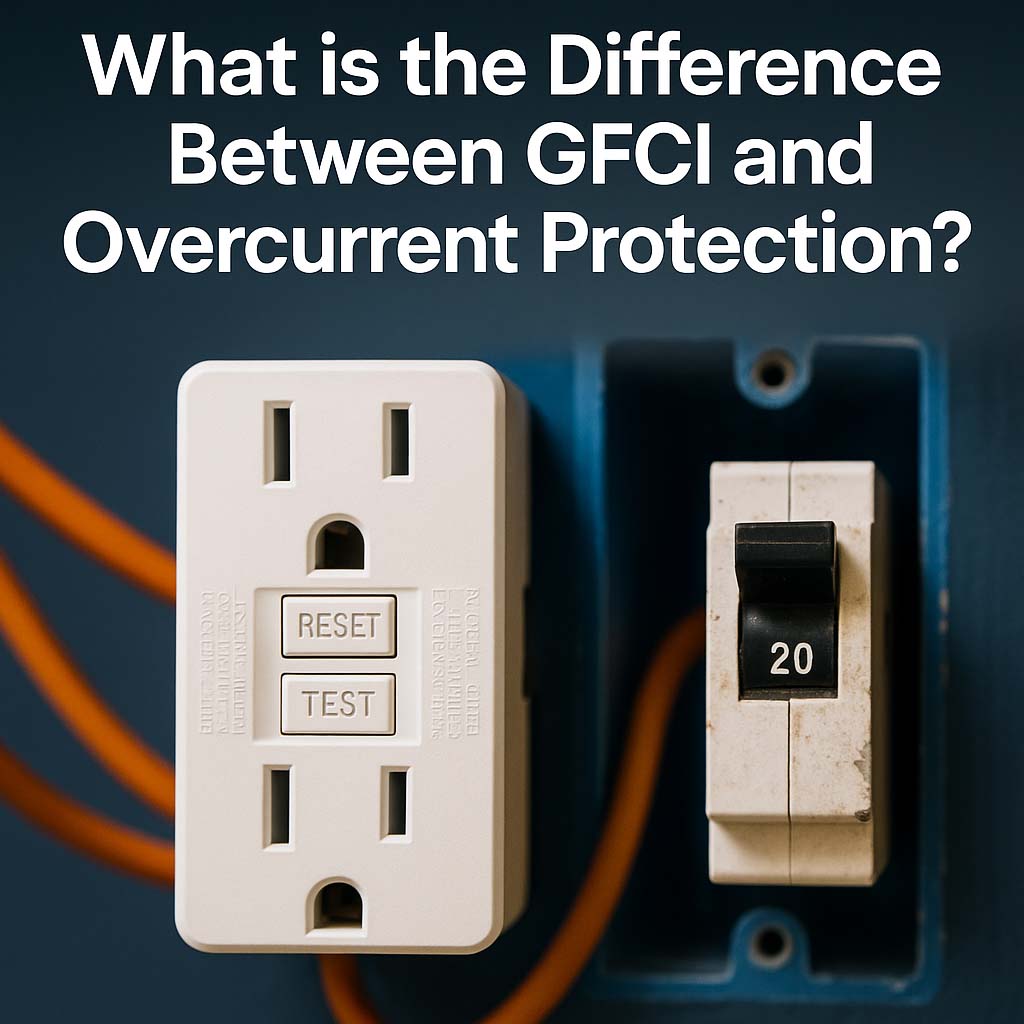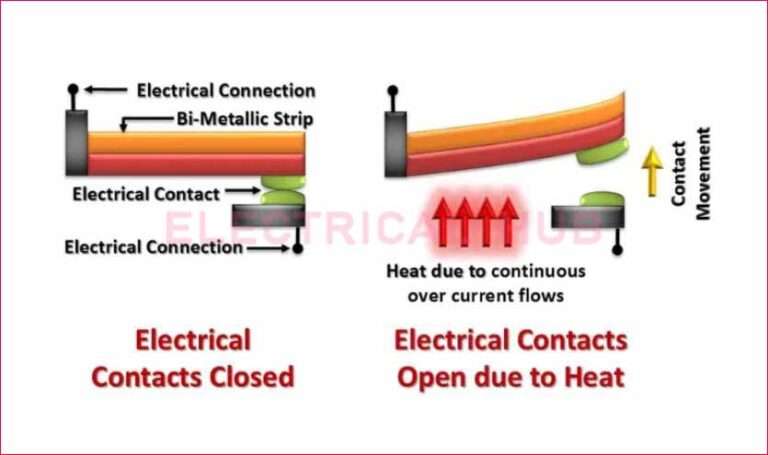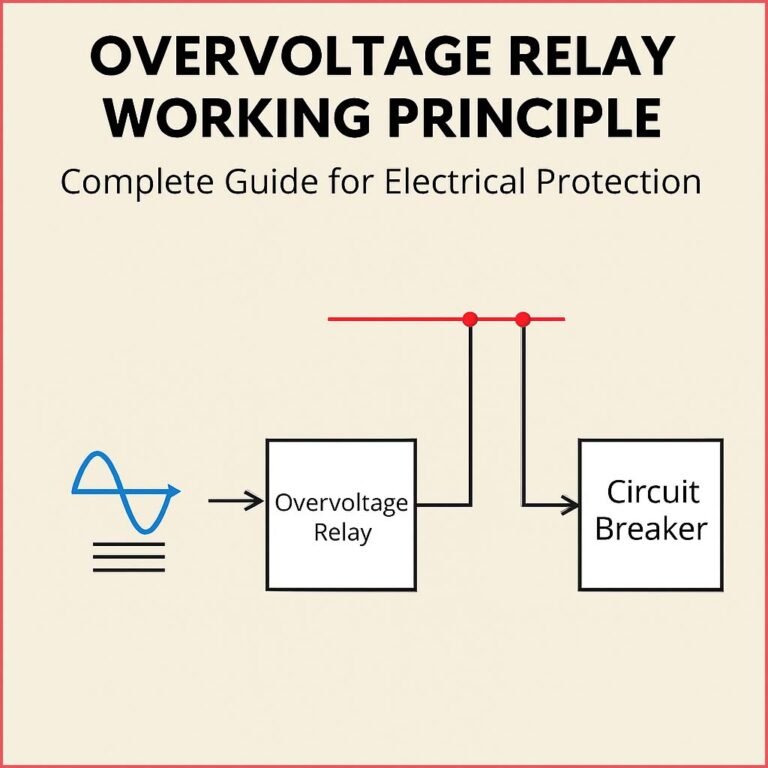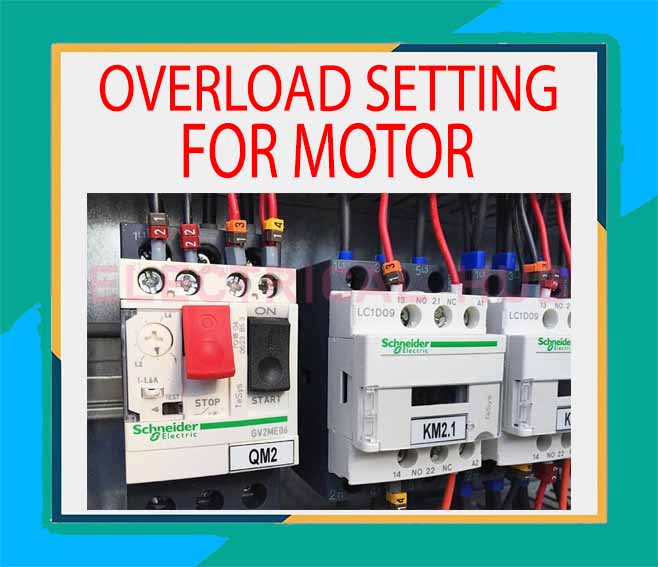What is the Difference Between GFCI and Overcurrent Protection?
When it comes to electrical safety, two of the most critical devices are GFCI and overcurrent protection systems. They serve distinct roles, but both are essential for protecting people and equipment. Understanding their differences not only improves safety but also ensures compliance with international standards, including IEC standard for protection relays.

Let’s explore the core differences, technical functions, and real-world applications of GFCI and overcurrent protection, especially in residential, commercial, and industrial environments.
Understanding GFCI and Overcurrent Protection
To understand the difference between GFCI and overcurrent protection, we must first define each one and see how it operates in an electrical system.
GFCI (Ground Fault Circuit Interrupter) is a safety device that disconnects the power supply when it detects a ground fault current. Ground faults occur when electricity takes an unintended path to the ground, which can be deadly if a person is in that path.
Overcurrent protection refers to protective mechanisms (like circuit breakers or fuses) that safeguard the circuit from excessive currents. These currents may result from short circuits or overloads and can cause damage to equipment or even fire.
Learn more about What are the Three Types of Overcurrent?
Key Functional Differences Between GFCI and Overcurrent Protection
Let’s compare both protection types in terms of function, sensitivity, and application.
| Aspect | GFCI Protection | Overcurrent Protection |
|---|---|---|
| Purpose | Protect humans from electrical shock due to ground faults | Protect wires and equipment from overheating and fire due to excess current |
| Detection Type | Ground fault (difference between hot and neutral current) | Excessive current due to short circuit or overload |
| Typical Devices | GFCI outlets, GFCI circuit breakers | Circuit breakers, fuses, overload relays |
| Trip Threshold | 4–6 milliamps | Depending on rating (10A, 16A, 32A, etc.) |
| Response Time | Within milliseconds | Varies based on magnitude of current and breaker curve |
| Standards | NEC (National Electrical Code), IEC 61008/61009 | IEC standard for protection relays, UL489, IEC 60947-2 |
| Application | Bathrooms, kitchens, outdoor outlets | Entire circuit protection in homes, industries, panels |
Learn more about Motor Protection Circuit Breaker vs Overload Relay
How GFCI Works
A GFCI constantly compares the current flowing in the hot and neutral wires. In a properly working circuit, the current going to and returning from the load should be equal. If it detects a difference (typically 5mA or more), it trips the circuit in less than one-tenth of a second.
This quick reaction is essential in preventing fatal electric shocks. GFCIs are especially useful in wet environments, where the risk of current leakage is higher.
Real-World Application of GFCIs
In homes, GFCI protection is mandatory for:
- Bathroom outlets
- Kitchen counters
- Outdoor receptacles
- Garage power points
- Laundry areas
In commercial setups, GFCIs are used in:
- Temporary power systems
- Food preparation areas
- Construction sites
How Overcurrent Protection Works
Overcurrent protection is broader and includes both overload protection and short circuit protection.
Overload Protection protects against sustained currents above the rated load but below the level of a short circuit. These conditions may occur when too many devices run on the same circuit.
Short Circuit Protection kicks in when current bypasses the intended load path due to a fault. It can result in extremely high currents that can damage equipment and ignite fires.
Circuit breakers and fuses are the most common overcurrent devices. Circuit breakers can reset, while fuses must be replaced after tripping.
Learn more about Overload Setting for Motor
When to Use GFCI vs Overcurrent Protection
Both types of protection are not interchangeable—they serve different purposes.
GFCI and overcurrent protection must often work together. A typical example is a GFCI breaker that integrates both ground fault and overcurrent protection. However, most setups have separate devices:
- GFCI outlet for human protection
- Circuit breaker or fuse for circuit protection
Example Scenario:
A kitchen has multiple outlets connected to a 20A breaker. A toaster plugged into one outlet develops a fault, leaking current through its metal casing. The GFCI detects the imbalance and trips instantly, protecting the user.
However, if someone connects several high-wattage appliances and the total current exceeds 20A, the overcurrent breaker will trip to prevent overheating of wires.
Both events are dangerous, but they require different protective responses.
Learn more about NEC 250.66 Table
GFCI vs Circuit Breaker vs Overload Relay
It’s easy to confuse these devices. Here’s how they differ:
- GFCI: Detects leakage to ground; human protection
- Circuit Breaker: Trips on overload or short; equipment protection
- Overload Relay: Protects motors from overheating; often used with contactors
This also ties in with Motor Circuit Protection, where overload relays are critical. Motors may draw high inrush currents that normal breakers can’t differentiate from real faults. That’s why overload relays are chosen carefully, based on motor current and Types of Overcurrent.
Importance of Using the Right Protection
Neglecting either GFCI or overcurrent protection can be dangerous:
- Without GFCI, even small ground faults can lead to electric shocks or fatalities.
- Without overcurrent protection, wires and equipment can overheat and catch fire.
Modern protection systems often integrate both. However, knowing the distinction helps in maintenance, troubleshooting, and system design.
IEC Compliance and Industry Standards
In commercial and industrial sectors, adherence to standards like the IEC standard for protection relays is a must. These ensure proper selection, setting, and coordination of devices. Industrial panels may use:
- Type B GFCIs for variable frequency drives (VFDs)
- High-rupturing capacity fuses for overcurrent protection
- Digital protection relays with dual function (GFCI + overcurrent)
Even in advanced applications such as Motor Circuit Protection, integrating both is necessary. GFCI protects operators from leakage currents, while overload relays and breakers handle electrical faults.
Key Takeaways on GFCI and Overcurrent Protection
Understanding the distinction between GFCI and overcurrent protection is fundamental for electrical safety. Here are the key points:
- GFCI protects people from electric shock
- Overcurrent protection safeguards circuits from excessive current
- Both are required for a complete protection strategy
- Devices may be combined (e.g., GFCI breaker), but their roles remain distinct
- Always follow regulatory standards (e.g., NEC, IEC) during installation
Conclusion
In today’s safety-conscious electrical systems, knowing the difference between GFCI and overcurrent protection is more than theoretical—it can be a matter of life and death. While GFCIs save lives by detecting leakage currents, overcurrent protection saves equipment and property by halting dangerous current flow.
Always consult with qualified professionals when designing or inspecting protection systems. Ensure you’re using the correct devices, not only for compliance but for the safety of everyone involved.
Follow Us on Social:
Subscribe our Newsletter on Electrical Insights for latest updates from Electrical Engineering Hub
#GFCI, #OvercurrentProtection, #ElectricalSafety, #CircuitProtection, #GroundFault, #ElectricalEngineering, #HomeWiring, #ElectricalCodes, #NECStandards, #ElectricalInstallation, #PowerSafety, #BreakerPanel, #GFCIvsOvercurrent, #ProtectYourHome, #ElectricianTips





